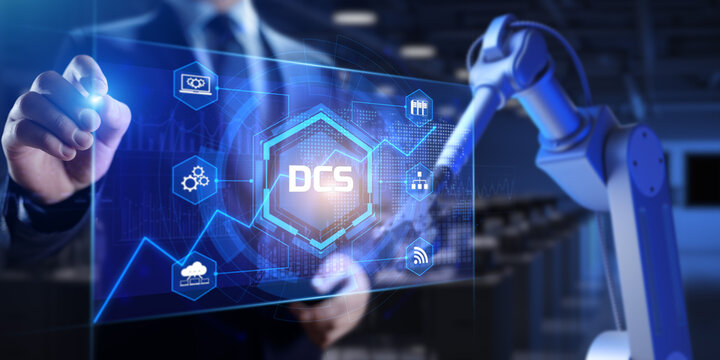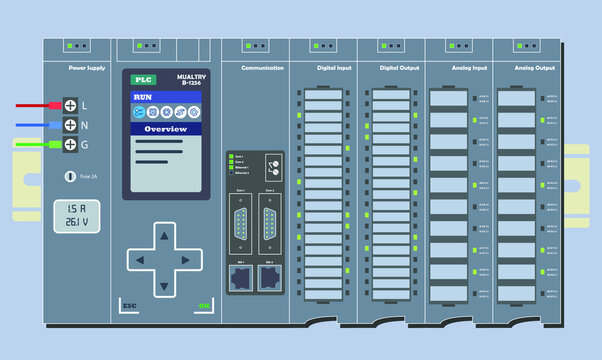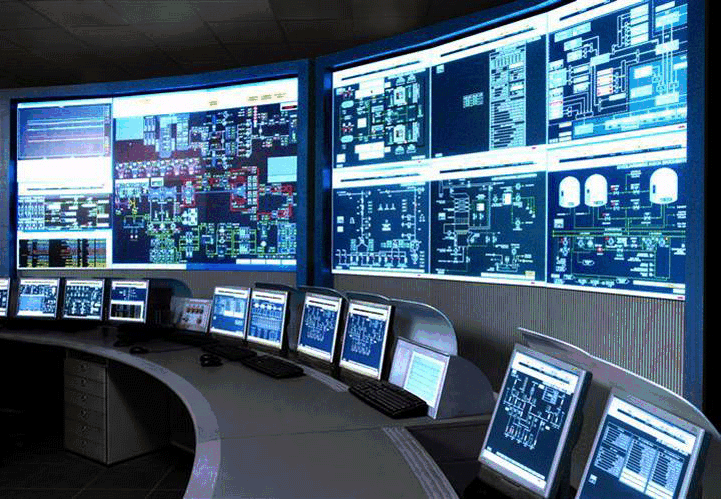DCS vs PLC vs SCADA
DCS, PLC, and SCADA are important systems when dealing with industrial controls. Although these systems perform similar functions, they do so in a variety of ways which can make one preferable in a certain application. In this article, we review the role each of them plays in control systems, as well as compare DCS vs PLC vs SCADA.

DCS
DCS stands for Distributed Control System, and plays a vital role in industrial control systems, especially as they grow larger and more complex. A DCS divides the entire system into subsystems and assigns each subsystem a controller. Also, all subsystems within the facility connect together to enable the sharing of data across the entire workspace.
Typically, a DCS collects data from field devices. This data comes in the form of signals, which are sent to the field junction boxes and onward to the marshalling cabinet. The marshaling cabinet handles analog and digital signals and sorts them out for easy identification. Moreover, a marshaling cabinet usually has spare slots for the integration of more field devices into the system.
After leaving the marshaling cabinet, the signal goes to the DCS panel, where it is analyzed, and action is taken either automatically or manually by an operator. In summary, the functions of a DCS include:
- Acquisition of data.
- Diagnosis and security of the system.
- Data storing, logging, and generation of reports.
- Alarm provision.
- Device controls.
Advantages of DCS
Using a DCS offers several advantages to an application, some of these include:
- Sufficient redundancy as controllers exist for each subsystem, and all subsystems interconnect. Thus, one failure does not lead to the shutdown of the entire plant.
- Dividing the system into various parts ensures no overload occurs.
- The DCS provides a significant amount of data storage, allowing for the monitoring of process condition trends and analysis for accurate forecasting and predictive maintenance.
Disadvantages of DCS
Despite all the desirable features, the DCS still has downsides which include:
- It is expensive to put together the entire system.
- The DCS requires high maintenance needs and regular software and hardware system upgrades.
- Due to the interconnectivity of all system parts, it is prone to cyber-attacks.

PLC
The PLC (Programmable Logic Controller) provides a control system for process control and industrial automation. It is a digitally operated device with programmable memory for storing instructions to carry out specific functions. Moreover, some of these functions include logic, timing, arithmetic, sequencing, and counting to control machines in an industrial process.
A PLC fits high-speed control applications and has a simple and relatively inexpensive design. The basic components of a PLC are:
- Input/Output Assembly (I/O): This assembly receives signals from field devices such as pressure and proximity sensors, then passes them to the programming device. Also, it sends output signals from the PLC to actuators, such as lights, pumps, and motors, to adjust or control the process.
- Programming device: This is a computer that acts as the brain of the PLC. The programming tool is installed and runs on this device. It receives the signal from the I/O assembly, processes it with the programmable software, and sends a binary output signal to the I/O.
- Power supply: Generally, the power requirement for a PLC is 24 VDC or 120 VAC.
Advantages of PLC
- PLCs are known for their high level of reliability and low maintenance requirements.
- Due to the simple design, the system provides a quick response time.
- Its simplicity allows for easy troubleshooting.
- It delivers flexibility as the system is reprogrammable to perform different functions.
- PLCs are relatively inexpensive.
Disadvantages of PLC
- Its design is not intended for large-scale operations due to its lack of modularity.

The SCADA System
SCADA, which is Supervisory Control and Data Acquisition, incorporates a system of computers, graphic user interfaces, and networked data communications that work together to provide high-level process supervisory management.
SCADA is the ideal technology to implement when real-time data acquisition across multiple locations is necessary. Components of a SCADA system include:
- Supervisory computers: These computers receive and process data from the field devices. Also, they send out control commands to the PLCs. One unique function these computers perform is tagging, where certain field devices are prevented from unauthorized operation.
- Human-machine interface (HMI): The HMI provides a platform for operators to monitor live feed from the supervisory computers. From here, operators can observe trends, alarm displays, data logging, etc.
- Remote terminal unit (RTU): RTU shares operational characteristics with an I/O assembly, but it works intelligently.
- Programmable logic controllers: A typical SCADA system contains several PLCs for implementing control commands in the field.
- Communication infrastructure: A SCADA’s communication infrastructure utilizes a range of proprietary protocols to enable smooth data transfer between RTUs, PLCs, supervisory computers, and the HMI.
Advantages of SCADA
- Provides access to real-time data, allowing rapid decision-making from operators and engineers.
- Enables distant communication, so operators may work remotely from a variety of sites.
- Advanced tools such as trend monitoring and historical data make implementing predictive maintenance easier.
Disadvantages of SCADA
- Requires a high skill level from operators.
- Can only process data when the system is available.
- Compatibility issues may arise when dealing with multiple PLCs and RTUs, especially from different vendors.
Differences Between DCS vs PLC vs SCADA
Each system provides a litany of benefits but must be rightsized to its application. Curious to know which fits your process best? Reach out to Panelmatic, and our team will provide you with our expert advice.
| DCS | PLC | SCADA | |
| Scope of control function | Has a dedicated controller for each subsystem, which is interconnected. So can cover an entire plant. | Provides local (on-site) controls using a centralized controller. Limited to control only a section of a plant. | Uses proprietary software to integrate PLCs and RTUs remotely across different locations. |
| Software | Comes only from a DCS vendor. | The software for programming a PLC comes from its manufacturer. | Clients can choose from several vendors available in the market. |
| Communication | Uses both analog and digital signals. | Binary. | Can use different protocols for different layers of the system. However, compatibility is key. |
| Cost | The most expensive to implement. | Cheapest to implement. | More expensive than PLC but less expensive than DCS. |
| Speed | Operates at the fastest speed in comparison to other control systems. | Lower than PLC but quicker than SCADA. | The speed of the system is limited due to remote communication. |
| Susceptibility to errors | Has several controllers and redundancy at all levels, so low margin for errors. | Prone to errors because it uses only one controller. | Redundancy and data-driven decision-making limit the possibility of errors. |
| Applications | Excellent for large and complex systems within a facility. | Ideal for simple, dedicated applications | Used for remote monitoring and controls, so allows operators to work off-site. |
